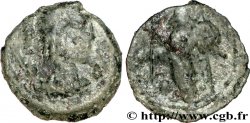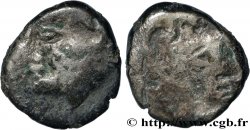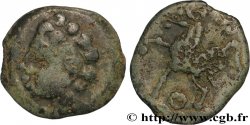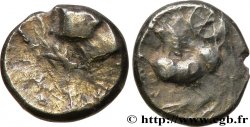Live auction - bga_412302 - GALLIA - ARVERNI (Area of Clermont-Ferrand) Statère d’or au cheval à droite et à la lyre, du type de Lapte - première série
You must signin and be an approved bidder to bid, LOGIN TO BID. Accounts are subject to approval and the approval process takes place within 48 hours. Do not wait until the day a sale closes to register. Clicking on "BID" constitutes acceptance of the terms of use of cgb.fr private live auctions.
Bids must be placed in whole Euro amounts only. The sale will start closing at the time stated on the item description; any bids received at the site after the closing time will not be executed. Transmission times may vary and bids could be rejected if you wait until the last second. For further information check the Live auction FAQ
All winning bids are subject to a 18% buyer’s fee.
All winning bids are subject to a 18% buyer’s fee.
| Estimate : | 4 500 € |
| Price : | no bid |
| Maximum bid : | no bid |
| End of the sale : | 13 December 2016 15:00:00 |
Type : Statère d’or au cheval à droite et à la lyre, du type de Lapte - première série
Date: c. 120-60 AC.
Metal : gold
Diameter : 17 mm
Orientation dies : 1 h.
Weight : 7,70 g.
Rarity : R3
Coments on the condition:
Statère sur un flan large mais un peu irrégulier, avec des types de droit et de revers complets. Usure homogène avec de beaux reliefs bien nets
Catalogue references :
Obverse
Obverse legend : ANÉPIGRAPHE.
Obverse description : Tête masculine, jeune, imberbe à gauche.
Reverse
Reverse legend : ANÉPIGRAPHE.
Reverse description : Cheval bondissant à droite, attelé à un char dont on aperçoit l’aurige ; lyre à deux cordes sous le poitrail, accostée de deux petites triskèles (?).
Commentary
Style particulier et poids lourd pour cette série proche du statère du trésor de Lapte de la collection Changarnier (cf. RBN 1958, pl. III et Addendum p. 73) avec la lyre du revers à l’envers.
Ce type de statère se divise en deux classes : revers à droite ou à gauche. La lyre est parfois accostée des lettes M et A, ce qui a fait penser à une attribution aux Mandubiens ; sur cet exemplaire il s'agit plutôt de deux petits triskèles simplifiés. Même coin de revers que le DT. 3375 (2006.2.1 du musée Crozatier, provenant du trèsor de Lapte).
Ce type de statère se divise en deux classes : revers à droite ou à gauche. La lyre est parfois accostée des lettes M et A, ce qui a fait penser à une attribution aux Mandubiens ; sur cet exemplaire il s'agit plutôt de deux petits triskèles simplifiés. Même coin de revers que le DT. 3375 (2006.2.1 du musée Crozatier, provenant du trèsor de Lapte).








 Report a mistake
Report a mistake Print the page
Print the page Share my selection
Share my selection Ask a question
Ask a question Consign / sell
Consign / sell
 Full data
Full data









